- Scientific Distinction Between Sexual Orientation and Gender Identity – Sexual orientation has a strong biological basis, while gender identity lacks clear scientific evidence and is influenced by social and psychological factors.
- Impact on Gay and Lesbian Communities – The rise of gender ideology has contributed to a surge in female-to-male transitions, disproportionately affecting same-sex attracted girls. Lesbians face pressure to accept trans women as partners, challenging the concept of same-sex attraction.
- LGBTQ+ Movement Shift – The focus of LGBT activism has shifted from securing rights for LGB individuals to emphasizing gender identity, often at the expense of sex-based rights and biological reality.
- Sociopolitical Trends and Policy Responses – Laws and policies increasingly favor gender self-identification, reshaping legal definitions of sex and complicating same-sex attraction. Some countries are reversing course, prioritizing cautious, evidence-based approaches to gender dysphoria treatment.
- Cultural and Institutional Influence – Schools, media, and corporations have adopted gender ideology, often sidelining discussions on biological sex and its relevance to same-sex attraction.
1. Scientific Basis: Sexual Orientation vs. Gender Identity
Sexual Orientation (LGB). Decades of research indicate that sexual orientation (being gay, lesbian, or bisexual) has a strong biological foundation. Studies suggest people are “born with a certain sexual attraction,” not taught it. For example, neuroscientist Debra Soh notes that sexual attraction is likely rooted in biology – potentially influenced by prenatal factors like hormones or immune responses – rather than social upbringing. Scientists have found physiological evidence: male and female brains show sex-specific structures, and gay individuals sometimes exhibit brain anatomy or responses intermediate between heterosexual males and females. These findings align with the idea that being gay/lesbian is an innate trait. Indeed, multiple lines of evidence (twin studies, the fraternal birth-order effect in males, etc.) point to biological correlates of homosexuality, meaning one’s sexual orientation is largely not a choice or social construct but an intrinsic aspect of identity. This contrasts with unfounded claims of “sexual fluidity for anyone,” which Soh calls a “bizarre strain of thinking” – she argues orientation is fixed for most people. In short, sexual orientation is empirically understood as an innate, biologically influenced trait. The following figures and studies provide empirical support for the assertion that sexual orientation is an innate, biologically influenced trait, rather than a choice or purely social construct.
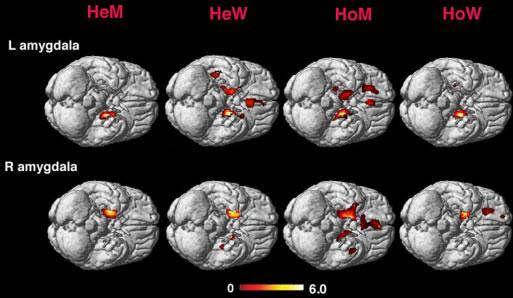
A study by Ivanka Savic and colleagues at the Stockholm Brain Institute found that homosexual men and heterosexual women have symmetrical brain hemispheres, while heterosexual men and homosexual women exhibit asymmetry, with the right hemisphere larger than the left. This suggests a neuroanatomical basis for sexual orientation. Research published in Proceedings of the National Academy of Sciences demonstrated that homosexual men and heterosexual women show similar hypothalamic activation when exposed to certain pheromones, differing from the responses of heterosexual men. A study reported in PubMed also found that 65.8% of monozygotic (identical) twins were concordant for homosexual orientation, compared to 30.4% of dizygotic (fraternal) twins. Furthermore research indicates that each older biological brother increases the odds of a male being homosexual by approximately 33%. This is thought to be due to a maternal immune response to male-specific antigens during pregnancy. This suggests a genetic component to sexual orientation.
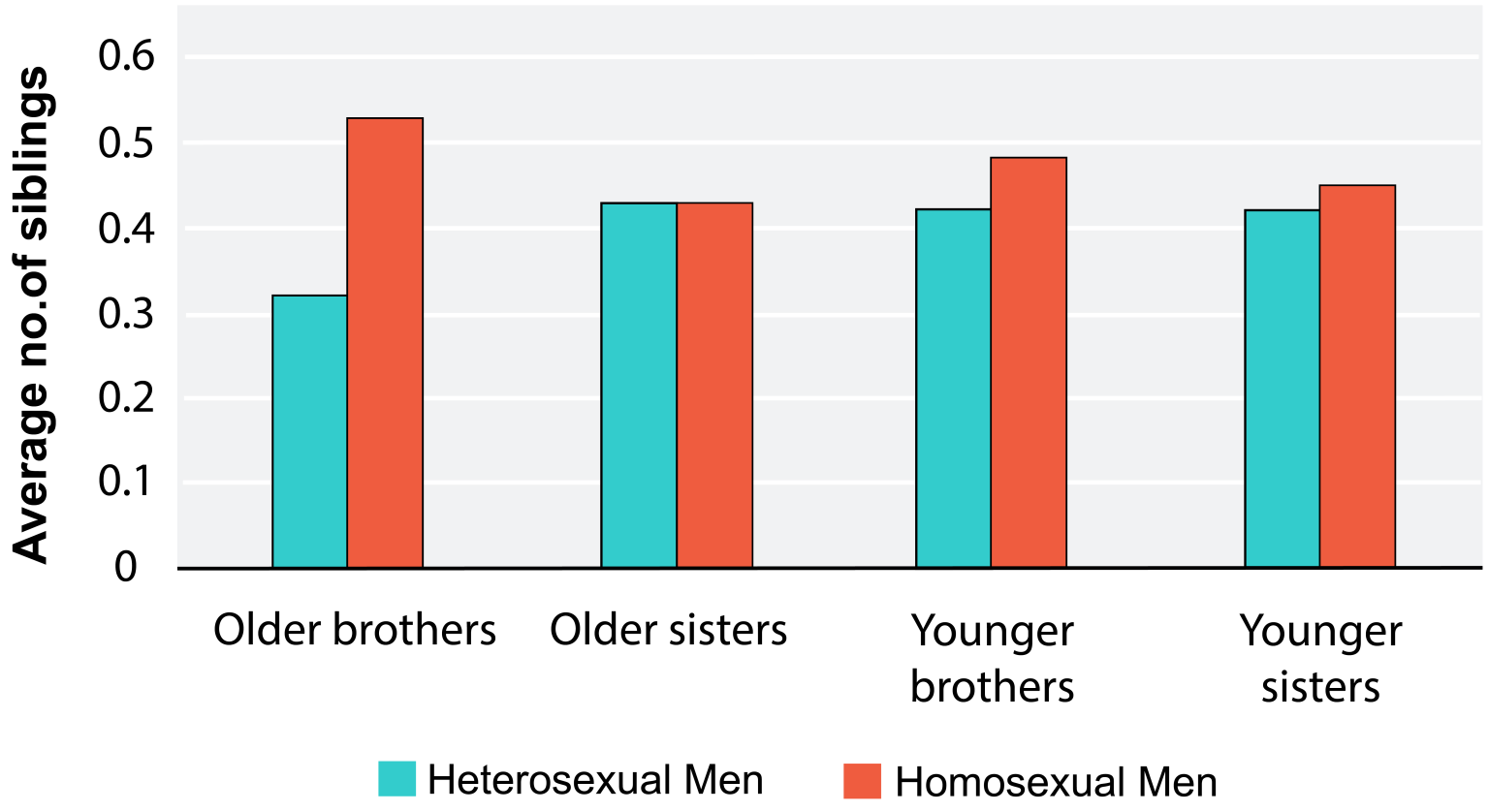
Gender Identity (T/Q). The concept of gender identity – one’s internal sense of being male, female, or something else – is newer to scientific inquiry, and evidence for a purely biological basis is less conclusive. Some neurological studies have reported subtle brain differences in transgender individuals (for instance, trans women showing certain brain features shifted toward a female-typical pattern). However, experts caution that these findings are preliminary and often confounded by factors like hormonal treatments. “It remains unclear whether [observed] brain differences are a reflection of gender identity,” Soh notes, meaning science has not definitively shown an inborn “female brain in a male body” or vice versa. In fact, a large proportion of youth with gender dysphoria have other mental health diagnoses (one survey found 75% had co-occurring disorders), suggesting dysphoria may sometimes arise from psychosocial factors.

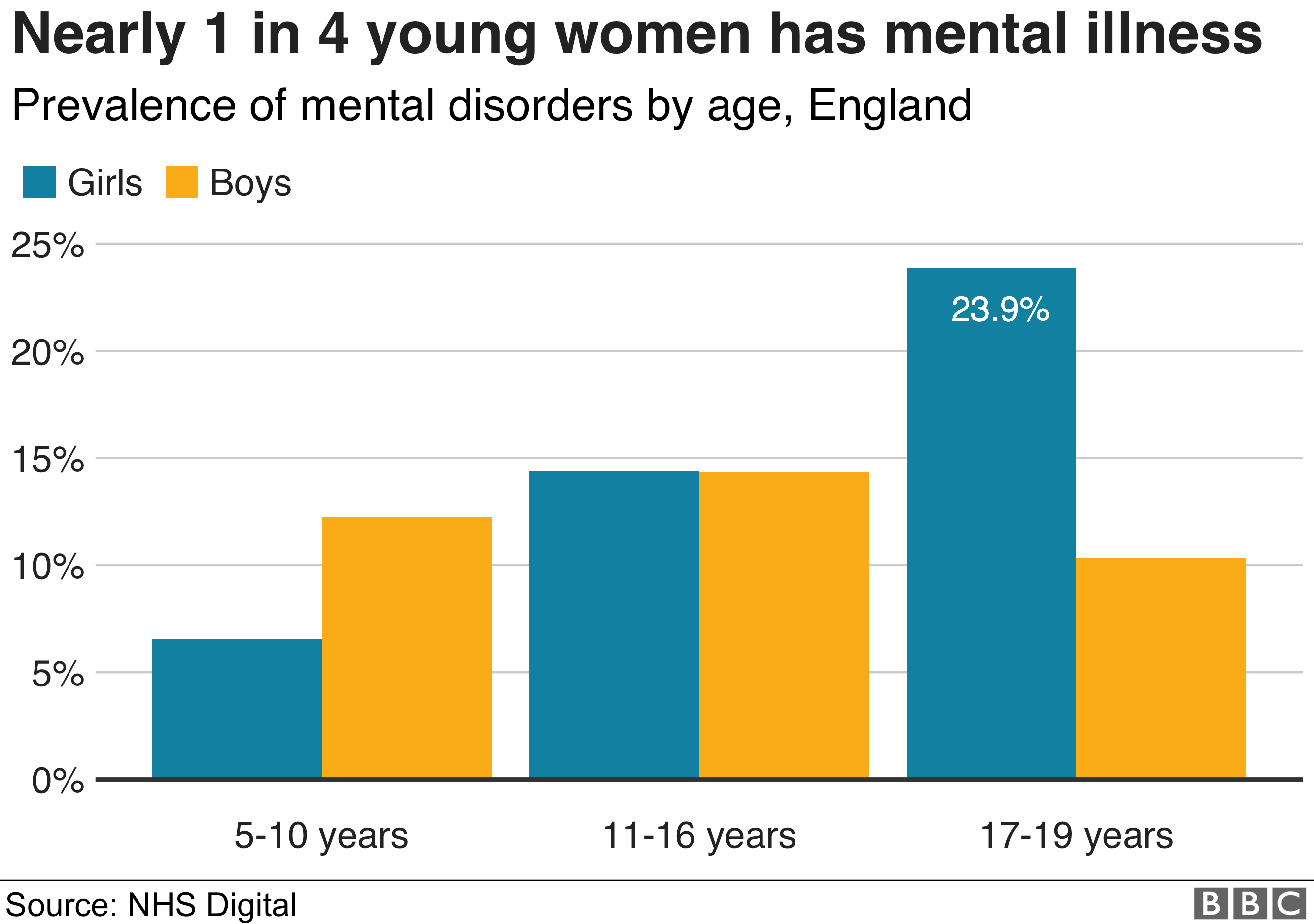
Moreover, gender identity displays notable social patterns: the vast majority of gender-dysphoric children (60–90%) outgrow their dysphoria by puberty if not affirmed as trans. This high “desistance” rate implies that for many kids, feelings about gender are fluid and tied to developmental or social context. Recent phenomena like “rapid-onset gender dysphoria” in peer clusters (especially teen girls) further point to social influence. Researchers like Dr. Lisa Littman found that 87% of youth in her parent-survey had friend groups where multiple peers became transgender-identifying around the same time, and 41% of those youths had first identified as lesbian, gay, or bisexual before coming out as trans. These patterns underscore that gender identity may be more malleable and influenced by social environment than sexual orientation. In summary, unlike sexual orientation, which is strongly rooted in biology, gender identity’s origins appear to be a complex mix of some biological predispositions (still under study) and significant social/psychological factors.
2. Impact on Gay and Lesbian Communities
Transition Trends Among Lesbians. A striking shift has occurred in the demographics of those pursuing gender transition, with implications for lesbian and gay communities. Historically, most transgender individuals were male-to-female, but in the last decade there’s been an explosion of female-to-male (FtM) transitions, often involving adolescents who would likely have identified as lesbians in the past. For example, the UK’s Tavistock youth gender clinic saw an unprecedented surge in adolescent girls referred for gender dysphoria. Female patients, once a small fraction of cases, swelled to 70% of referrals by 2016-2017 – jumping from only 32 girls in 2009 to 1,265 in 2016. This over 5,000% increase in trans-identifying teen girls over seven years suggests many youths who might have grown up to be lesbian women are instead transitioning to live as straight trans men. Clinicians observed that a “new kind of patient – distressed, same-sex attracted girls with complex problems – was being funnelled… towards medical transition” at Tavistock. Similar spikes are reported internationally. Researchers and writers like Abigail Shrier have voiced concern that social pressures and homophobia (e.g. bullying of “butch” girls in puberty) are influencing some lesbian teens to see transition as the answer. In essence, the data show a notable decline in the lesbian population as more young women adopt a trans male identity, a trend some have controversially dubbed “lesbian extinction” or a form of inadvertent gay conversion (since early transition can permanently sterilize youth who might have simply been gay adults).
Trend in youth gender dysphoria referrals. The number of children and adolescents referred to the UK’s NHS Gender Identity Development Service skyrocketed in the 2010s, especially among birth-assigned females. Many of these girls were gender-nonconforming and same-sex attracted, highlighting a new demographic of transgender youth.

Changing Identity Labels. Concurrently, within lesbian communities there’s evidence of changing self-identification, likely influenced by broader “queer” and gender-expansive ideologies. Traditional lesbian identity has somewhat declined as more women embrace fluid labels. For example, an Australian survey (SWASH) found that the percentage of non-heterosexual women who identified exclusively as “lesbian” dropped from 69% in 2014 to just 38% in 2024. Many younger women now prefer labels like “queer” or multi-label identities, reflecting a trend away from fixed sexual orientation categories. The table below illustrates this shift:
| Year | % of non-hetero women identifying only as lesbian |
|---|---|
| 2014 | 69% |
| 2020 | 51% |
| 2024 | 38% (preliminary) |
Table: Percentage of non-heterosexual women in a community survey choosing “lesbian” as their sole label (University of Sydney SWASH survey data). Many women now opt for broader labels (queer, bi, etc.), indicating a more complex view of sexuality.
Researchers note that some of this change comes from women adopting inclusive identities that accommodate gender-diverse partners or a more fluid self-concept. However, lesbian advocates worry that gender ideology may be eroding lesbian identity. If “lesbian” is redefined to include trans women (biological males), some women feel their orientation (attraction to female bodies) is being invalidated. The above trends – both the rise in FtM transitions and the decline in the use of “lesbian” label – highlight how the transgender movement’s rise has uniquely impacted lesbians as a group.
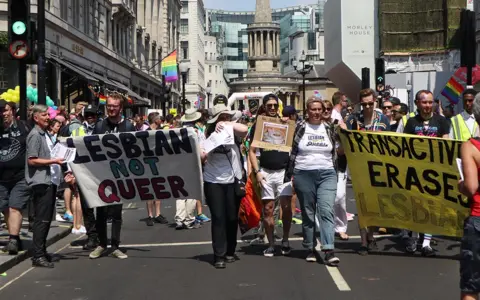
Same-Sex Dating and Social Pressures. The convergence of gender ideology with LGBT spaces has introduced new dynamics in dating for gay men and lesbians. One contentious issue is pressure on same-sex attracted people to accept trans partners as a test of inclusivity. Some activists now define sexual orientation by gender identity rather than biological sex – effectively saying lesbians can be attracted to trans women (male-bodied individuals) if they identify as women. Major LGBT organizations have adopted this language; notably, the UK’s Stonewall charity now states “gay” and “lesbian” mean attraction to the same gender, not same sex. This shift implies that a lesbian woman who exclusively dates natal females could be deemed exclusionary if she is unwilling to date a trans woman who has male anatomy. According to journalist Helen Joyce, under these new definitions “anyone who declares themselves exclusively attracted to people of the same sex has become a bigot” in the eyes of radical activists. This rhetoric has translated into real-world pressure.

A 2021 BBC investigation reported cases of lesbians being ostracized or accused of “transphobia” for refusing sex with trans women. In one survey (albeit with a small sample) cited by the BBC, 56% of lesbian respondents felt pressured or coerced to accept trans women as partners. Similarly, some gay men have been told that not considering trans men (who are biologically female) as dating prospects is prejudiced – challenging the very concept of same-sex orientation. These social pressures, often amplified on dating apps and within LGBT circles, have created a rift: many lesbians and gay men feel that their boundaries of attraction are being politicized. As one lesbian interviewee put it, “No one should be shamed for sticking to their sexual orientation, yet I’ve been called hateful for saying I’m only into women (natal females)”. While many trans people and allies do respect individuals’ personal preferences, the fact that some in the community experience such coercion is a source of growing tension. It underscores a fundamental conflict between gay rights (based on sex) and gender ideology (focused on self-identified gender). In summary, gender ideology’s rise has led some gay and lesbian individuals to feel marginalized within their own community – pressured to conform to new norms that sometimes conflict with their sexual orientation and dating autonomy.
3. LGBTQ+ Movement Shift: From Gay Rights to Emphasizing Gender Identity
Over the past decade, the focus of the LGBTQ+ movement has noticeably shifted from primarily LGB (sexual orientation) issues to those centered on T (transgender/gender identity) issues. Activist and political priorities have been reoriented in messaging, often to the frustration of some gay and lesbian veterans of the movement. Researchers and commentators point to the period after major LGB victories – for instance, the legalization of same-sex marriage (2015 in the U.S.) – as an inflection point. Rather than winding down, large LGBT advocacy organizations “simply redirected staff, fundraising and rhetoric” toward gender identity causes. In a short span, the relatively simple goals of gay rights (e.g. marriage equality, anti-discrimination) merged with more complex “gender politics” originating in academia and queer theory. This fusion gave rise to the now-common umbrella initialism “LGBTQ+”, which encompasses a broad spectrum of identities (trans, non-binary, genderqueer, etc.) beyond sexual orientation. As journalist Brad Polumbo observes, “the simple moral logic of non-discrimination [for gays] has been transformed into a… soup of invented identities.” The once-unifying rainbow flag has evolved with added stripes and colors to represent transgender and other gender-diverse groups, symbolizing this expansive shift.
Critics argue that this expanded agenda has at times subordinated LGB interests. A vivid example came from the UK’s largest LGBT charity, Stonewall. Stonewall embraced an “all in for gender self-ID” approach around 2015–2018, even changing definitions: it began describing biological sex as merely “assigned at birth” and redefined lesbian/gay in terms of gender identity. Under this doctrine, a gay man attracted only to male anatomy or a lesbian only to female anatomy could be seen as prejudiced. Prominent gay and lesbian activists – including Stonewall co-founder Simon Fanshawe and the newer LGB Alliance group – publicly accused Stonewall of “replacing sex with gender” as the movement’s focus. They argue that the hard-won understanding that sexual orientation is based on biological sex is being eroded by an agenda that says gender identity can override sex in defining who is gay or lesbian. This internal rift has led to what Polumbo calls a “growing estrangement” between parts of the LGB community and the trans activist wing. By 2019, the conflict was out in the open: essays and open letters circulated declaring it was time for “LGB and T to go their separate ways,” citing irreconcilable differences in goals.
From a political perspective, transgender rights issues began to dominate headlines and policy fights that previously centered on LGB rights. Campaigns around bathroom access, pronoun laws, medical coverage for transition, and gender self-identification laws took center stage, often backed by the same organizations that had championed gay rights. Governments and media that had allied with the gay rights cause moved swiftly to endorse transgender inclusion as the next civil rights frontier. Many activists who cut their teeth on gay rights applied the “born this way” framework to gender identity – even though, as discussed, the scientific backing for gender identity’s innateness is far weaker. This has occasionally led to logical tensions: for instance, some campaigns simultaneously insisted that gender identity is fixed and innate while sexual orientation can be fluid, a contradiction noted by Soh. Nonetheless, the activist narrative unified around the concept of LGBTQ+ as one movement, emphasizing that “trans rights are human rights” just as gay rights are.

The phrase ”Born This Way” began gaining widespread traction in the early 2010s, largely popularized by Lady Gaga’s 2011 song and album Born This Way, which became an anthem for LGBTQ+ identity and pride. The song explicitly promoted the idea that sexual orientation and gender identity are innate and not chosen, echoing a message that had already been influential in the gay rights movement for decades. However, the underlying concept — that being gay is not a choice but a natural, immutable trait — was foundational to the modern gay rights movement long before the phrase became popular. You can trace this rhetorical and strategic framing back to the 1970s and especially the 1980s, as gay activists increasingly adopted scientific and psychological arguments to counter claims that homosexuality was deviant or pathological. While the specific phrase ”Born This Way” wasn’t prominently used in gay rights activism during the 1970s and 1980s, the concept of innate sexual orientation was a foundational element of the gay rights movement. Activists emphasized that being gay was not a choice, countering narratives that framed homosexuality as deviant behavior.
It’s important to note that not all LGB individuals agree with this pivot. While many do support full equality for transgender people, they express concern that resources and attention have shifted away from issues still affecting gay men and lesbians (such as anti-gay hate crimes, or the specific health and social needs of LGB youth). There is also discomfort that the public perception of the LGBTQ+ movement is now heavily influenced by debates over gender identity – which can be more divisive – potentially jeopardizing the broad public support that gay rights achieved. For example, within some Pride organizations and charities, lesbians who wanted to discuss sex-based concerns (like ensuring lesbian-only spaces) have felt sidelined or even silenced in favor of the prevailing gender-inclusive line. This activist-driven change in priorities is evident in the language used by institutions, the allocation of funding, and the content of educational programs, which increasingly center on gender identity. In summary, the LGBTQ+ movement’s focus has undeniably expanded: what was once primarily about sexual orientation equality has become equally (or more) about gender self-expression and identity. This evolution has been driven by political strategy (keeping the movement active post-marriage equality), the rise of queer theory in academia, and advocacy by trans activists – resulting in a new movement landscape where tensions between “LGB” and “T” communities sometimes flare, even as all parties ostensibly share the same LGBTQ+ banner.
4. Sociopolitical Trends and Policy Responses

The shift toward gender ideology has elicited significant responses from governments, media, and institutions. Broadly, many liberal democracies moved rapidly to enshrine gender identity into law and policy, often paralleling protections long afforded to sexual orientation. At the same time, a cultural change has taken place in education and media representation, normalizing the concepts of gender self-identification and fluidity – sometimes outpacing the scientific consensus. Here we examine key trends:

- Legal Recognition and Self-ID Laws: A number of countries have adopted gender self-identification (self-ID) laws, allowing individuals to change their legal gender by simple declaration, without surgical or medical requirements. As of 2023, at least 17 countries had nationwide self-ID policies, including nations in Europe (e.g. Ireland, Denmark, Spain, Germany) and the Americas (Argentina was the pioneer in 2012). These laws were often implemented as part of broader LGBTQ+ inclusion efforts, treating gender identity as analogous to sexual orientation. Advocates argue that removing medical gatekeeping is a matter of dignity and human rights for trans people. However, opponents – among them some feminists and LGB activists – have raised concerns about unintended impacts on sex-based rights. For example, gender self-ID could allow biological males who identify as women to access female-only spaces (changing rooms, shelters, prisons) or to compete in women’s sports, raising safety and fairness issues. Governments have been split on these issues: the UK, for instance, saw heated public debate over reforming its Gender Recognition Act. Scotland passed a self-ID law in 2022, but it was controversially blocked by the UK government in 2023 amid concerns over its impact on women-only services. This tug-of-war shows how gender ideology has become a politicized topic, with progressive administrations tending to back self-ID, and more conservative or gender-critical voices urging caution to protect sex-based categories. Importantly, the impact on same-sex attracted individuals can be indirect but profound. Under self-ID laws, a heterosexual male who transitions can legally become “female” and even be counted as a lesbian woman in some contexts, which many lesbians find disquieting. Lesbian advocates have voiced fears that self-ID effectively erases the meaning of “lesbian” as female homosexual, since any trans woman attracted to women is now classed as a lesbian too. Thus, policies like self-ID, while intended to advance trans rights, have sometimes left gay and lesbian individuals navigating new complexities in language and legal definitions of their identities.
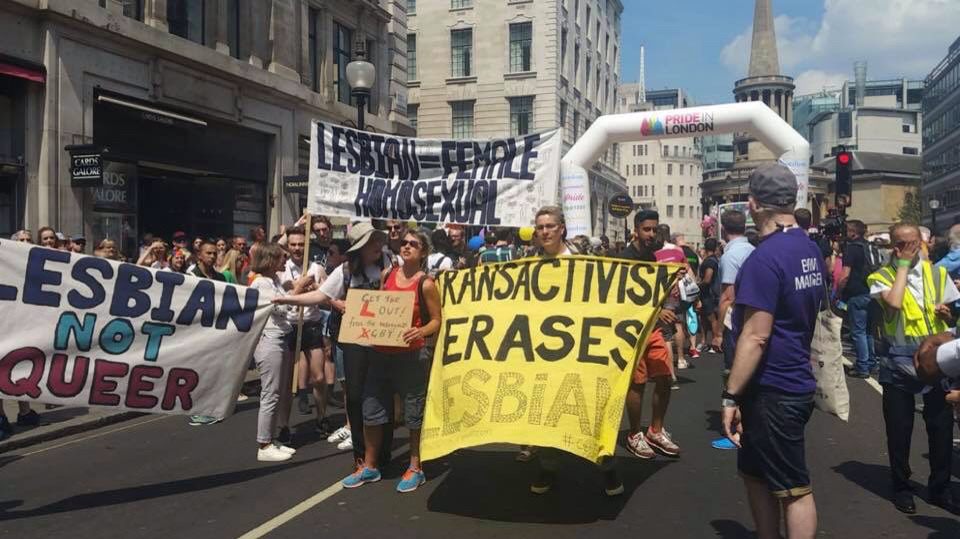
- Institutional Adoption and Education: Educational and corporate institutions have swiftly incorporated gender ideology into their policies and training. Schools in several countries now teach children that gender is on a spectrum and separate from biological sex, often as part of anti-bullying or inclusivity curricula. However, experts question the scientific accuracy of some materials. Dr. Debra Soh recounts that her friend’s 8th-grade son’s health class was taught “gender is a spectrum with little or no relation to biology,” a claim she labels unscientific. Nonetheless, such teaching has become common, reflecting how thoroughly gender identity concepts have penetrated mainstream education. Many schools allow students to choose their gender identities and names, sometimes without parental consent, following the principle of affirming a child’s declared identity. Proponents say this creates a supportive environment for transgender and nonbinary youth; critics worry it may reinforce transient identities or confuse kids, especially those who might simply grow up to be gay.
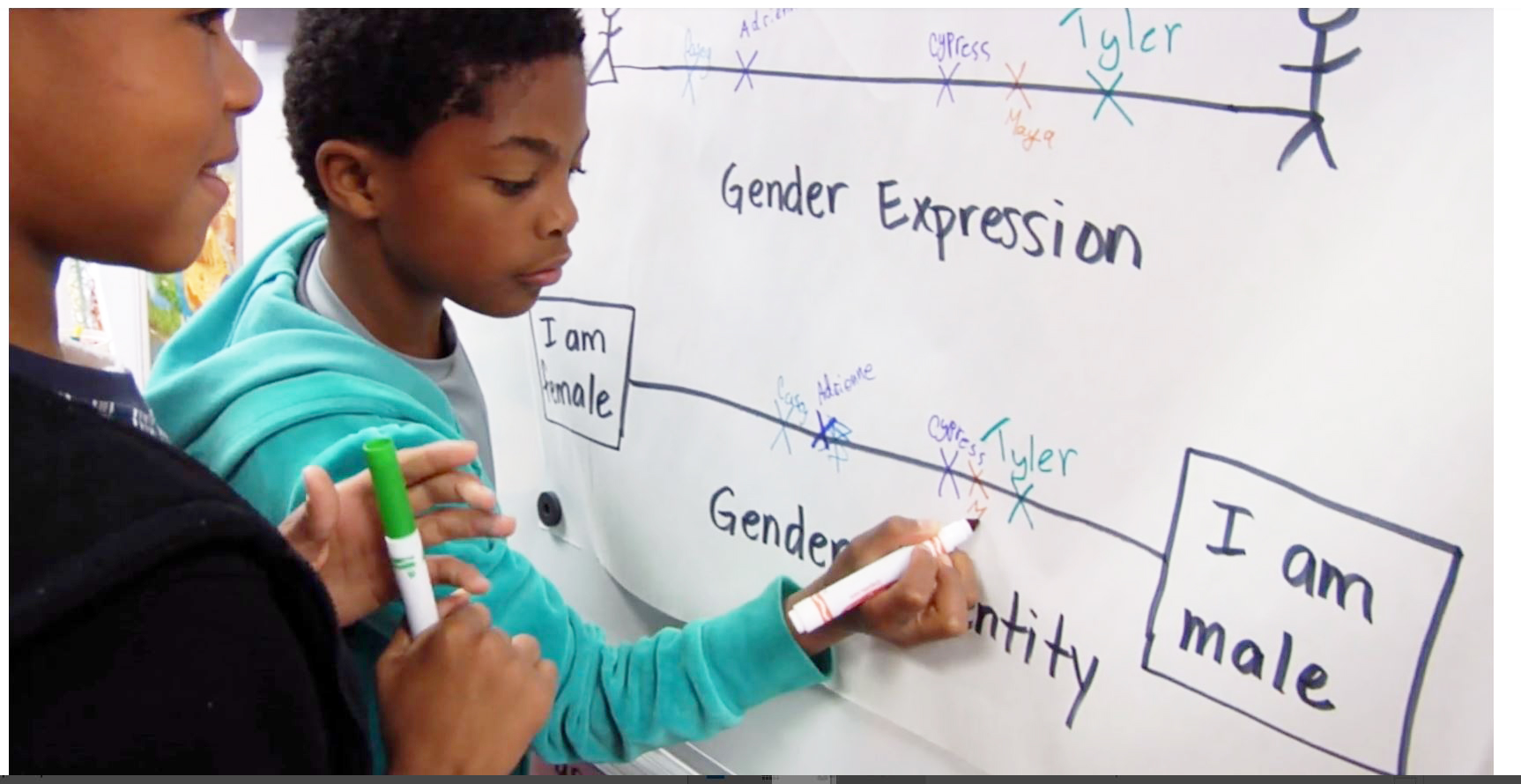 Beyond schools, workplaces and media have adopted new norms: pronoun declarations, gender-neutral facilities, and style guides that favor gender identity over sex (e.g. saying “pregnant people” instead of women, to include trans men). While these changes aim to include trans and nonbinary people, they have sparked debate about free expression and truthfulness in description. Some lesbian and gay commentators feel that institutions are now more focused on gender inclusivity training than on combating homophobia. For example, a company may celebrate “International Pronouns Day” but pay less attention to ongoing discrimination faced by LGB employees. This institutional emphasis on gender can inadvertently sideline same-sex attraction issues – a subtle but notable shift in diversity and inclusion programs.
Beyond schools, workplaces and media have adopted new norms: pronoun declarations, gender-neutral facilities, and style guides that favor gender identity over sex (e.g. saying “pregnant people” instead of women, to include trans men). While these changes aim to include trans and nonbinary people, they have sparked debate about free expression and truthfulness in description. Some lesbian and gay commentators feel that institutions are now more focused on gender inclusivity training than on combating homophobia. For example, a company may celebrate “International Pronouns Day” but pay less attention to ongoing discrimination faced by LGB employees. This institutional emphasis on gender can inadvertently sideline same-sex attraction issues – a subtle but notable shift in diversity and inclusion programs. - Media and Public Discourse: The media initially embraced gender identity narratives with few questions, often highlighting uplifting stories of transition and adopting the mantra “trans women are women.” In recent years, however, coverage has become more nuanced as data and dissenting voices emerged. Major outlets like the BBC and The Economist have run pieces investigating the surge in teenage transitions and the conflicts within the LGBT community. One BBC article (2021) broke a taboo by reporting that some lesbians felt pressured into intimacy with trans women and dared to discuss the “cotton ceiling” issue. The fact that this piece caused a furor – with activists demanding retraction – illustrates how polarized the media environment is around gender ideology.
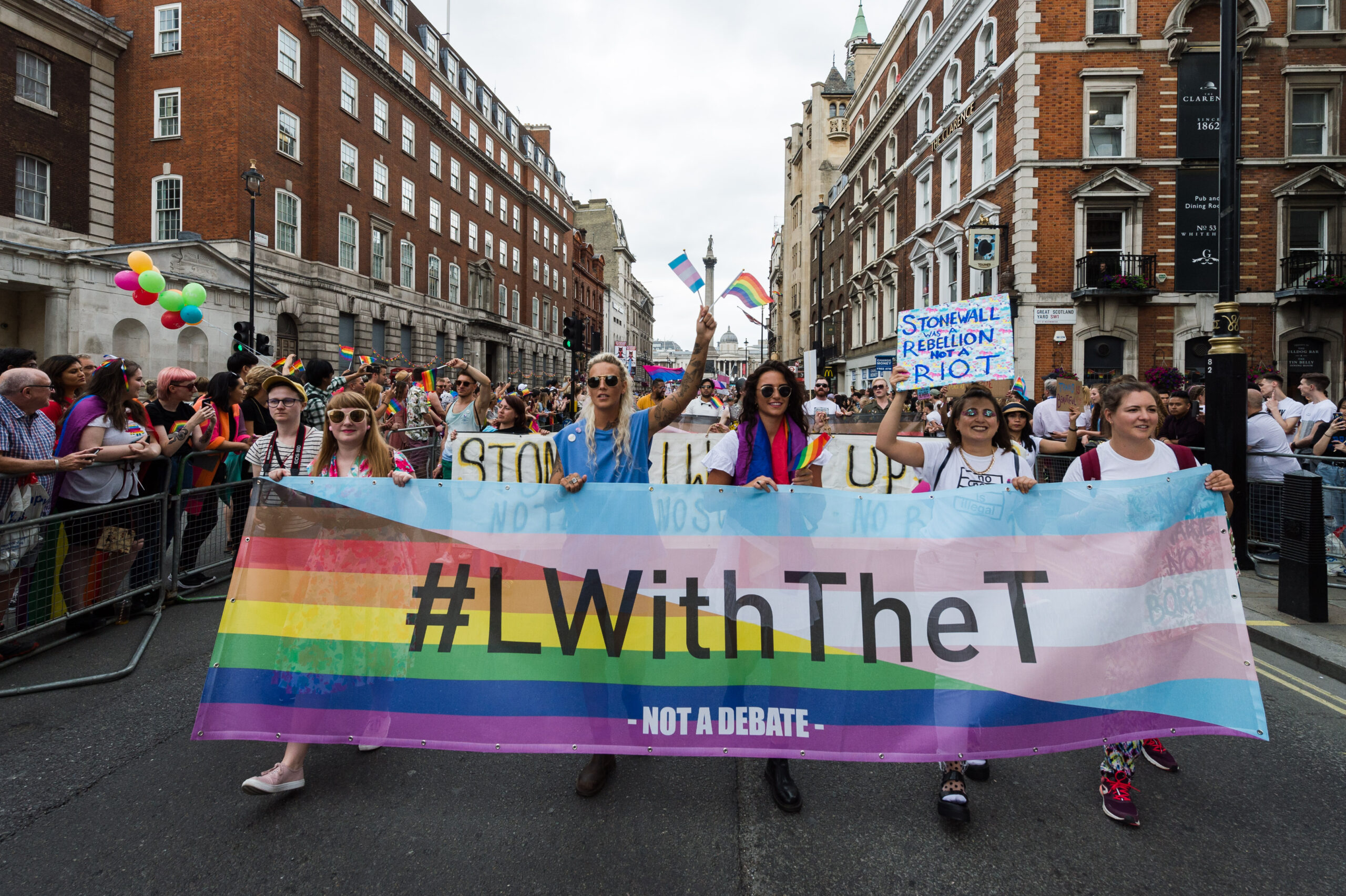 Still, the very appearance of such articles shows that the impact on gay and lesbian individuals is becoming part of the public conversation. In social media, battles rage between trans rights advocates and “gender-critical” feminists or gay activists. Governments and tech companies have sometimes policed speech on these matters (e.g. Twitter briefly suspending accounts for statements like “only females are women”), framing it as anti-hate enforcement. The sociopolitical trend, therefore, has been a rapid institutional embrace of gender identity frameworks, followed by a period of public debate and reevaluation as the real-world impacts become apparent.
Still, the very appearance of such articles shows that the impact on gay and lesbian individuals is becoming part of the public conversation. In social media, battles rage between trans rights advocates and “gender-critical” feminists or gay activists. Governments and tech companies have sometimes policed speech on these matters (e.g. Twitter briefly suspending accounts for statements like “only females are women”), framing it as anti-hate enforcement. The sociopolitical trend, therefore, has been a rapid institutional embrace of gender identity frameworks, followed by a period of public debate and reevaluation as the real-world impacts become apparent. - Policy Reversals and Nuanced Approaches: Notably, some countries renowned for LGBTQ+ support have begun tapping the brakes on aspects of gender ideology, especially in healthcare, in a data-driven manner. Sweden and Finland, for instance, have revised clinical guidelines for youth gender dysphoria, prioritizing psychotherapy over immediate hormonal treatment after reviewing evidence of outcomes. These moves came amid concern that an overzealous “affirmation-only” approach (which was partly driven by activist pressure) lacked solid evidence and could harm some children – many of whom were same-sex attracted and might desist in time. In the UK, the National Health Service ordered the closure of the Tavistock youth gender clinic in 2022 after an independent review (Cass Review) found that the standard of evidence for pediatric transitions was low and that “one size fits all” affirmative care left young people at risk. Such developments hint at a calibration in institutional response: a move from uncritical acceptance of gender ideology toward a more evidence-based approach that considers multiple factors (mental health, developmental maturity, possible homophobic influences on identity). Governments are trying to balance transgender individuals’ rights with protecting minors and safeguarding sex-based rights – a tricky sociopolitical tightrope.
In summary, the sociopolitical landscape has been transformed by the rise of gender ideology. Laws and policies in many jurisdictions now recognize gender self-identification, reflecting a broader commitment to transgender inclusion on par with gay rights. Media and educational institutions have largely aligned with this perspective, though a more nuanced discussion is now emerging. These shifts have unquestionably improved visibility and legal standing for transgender people. Yet they have also introduced tensions and unintended consequences – particularly for women and same-sex attracted groups – that society is currently grappling with. As researcher Julie Bindel noted, we are in the midst of a grand social experiment: expanding the definition of gender and orientation and seeing how it impacts everyone from vulnerable teens to the established gay and lesbian community. The challenge going forward will be crafting policies that uphold the rights of all individuals, considers the plausible psychiatric conditions in tandem with trans-identifying youths, while also respecting the realities of biological sex and the integrity of sexual orientation. Achieving this balance will require continued empirical research, open dialogue (without fear of cancellation), and nuanced, compassionate policymaking rather than one-size-fits-all ideological approaches.
Sources:
- Soh, D. (2020). The End of Gender – as summarized in review .
- Littman, L. (2018). PLOS ONE study on rapid-onset gender dysphoria .
- Shrier, A. (2020). Irreversible Damage – trends in female teen transitions .
- Mooney-Somers, J. & Kean, J. (2024). University of Sydney/ACON research on lesbian identity labels .
- Polumbo, B. (2019). “LGB vs T” analysis in Quillette .
- BBC News (2021). Report on lesbians and trans dating pressure .
- Thomson Reuters Foundation (2024). Context article on global self-ID laws .
- Cass Review Interim Report (2022) via BBC News .